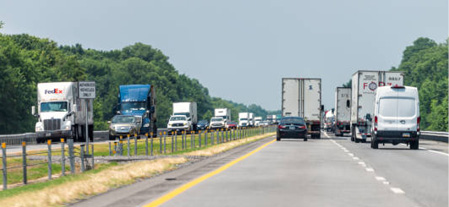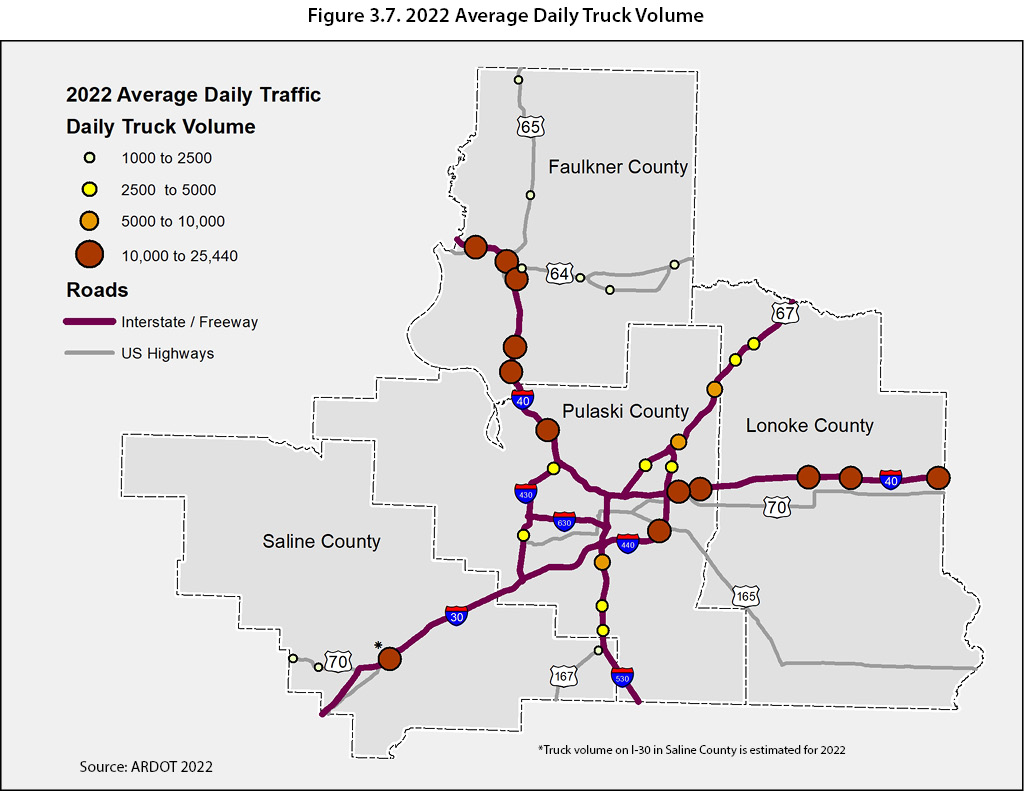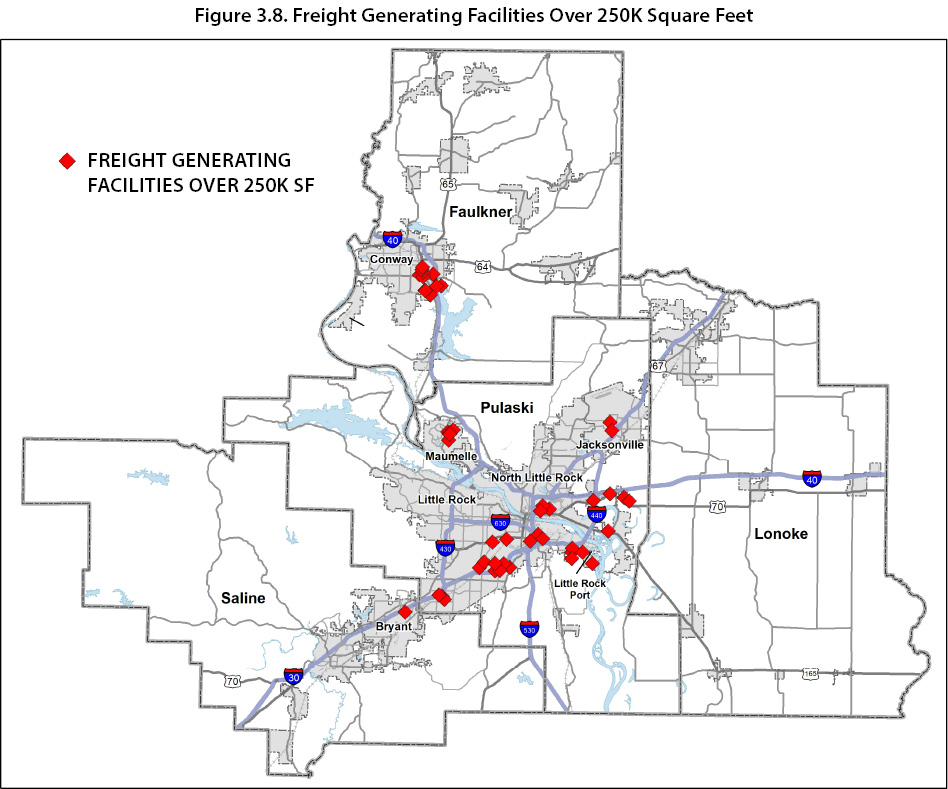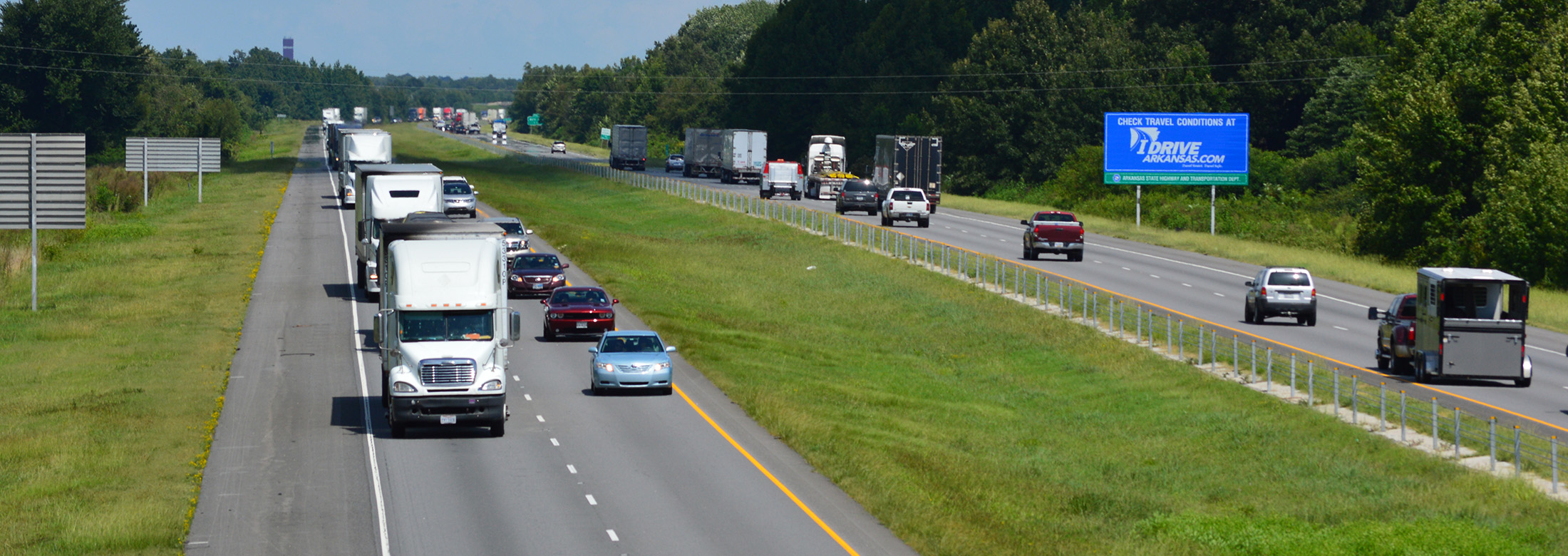8.
Build upon state freight planning to identify critical local freight corridors and increase intermodal options.
Imagine a region that is located close to the geographic and population center of the United States. Now, picture that area crossed by two major interstates, containing a key railroad logistical hub, and traversed by one of the longest navigable rivers in the country. For good measure, this region also offers a national airport. This is Central Arkansas. For any organization looking for a freight-moving mecca, the possibilities are endless.
Arkansas’ State Freight Plan, adopted in 2017, anticipates that statewide freight movement will grow substantially by land, water, and air by 2040. In fact, trucking freight will grow by 44 percent, rail by 35 percent, water by 14 percent, and air by 190 percent. Our region is strategically located to play a major role in that growth, but we must bolster our freight planning first. A regional freight plan should capitalize on our advantages and overcome obstacles.
The map below shows the region’s major freight flows by roadway. As you can see, the east-west axis along I-40 and the southwest-to-east axis along I-30 dominate regional freight flows, with secondary flows along I-530, U.S. 67-167, and U.S. 64.

Metroplan will study trends, identify critical corridors, and look for opportunities to coordinate freight movement between modes. Here are a few topics for consideration:
Roadway congestion. The Little Rock Region’s comparative advantage in freight movement stems in part from its comparative lack of traffic congestion compared with competing metro areas like Memphis, Dallas, St. Louis and New Orleans. A logical regional transportation strategy must include a goal of maintaining freight-moving capacity.
Competition between freight and passenger vehicle needs. This includes recognition of how differing roadway designs affect freight and passenger flows. Metroplan has made major progress since the late 1990s in replacing at-grade rail-road intersections with bridges. More needs to be done to reduce conflicts between rail and road traffic.
It is clear that freight flows are changing both nationally and locally. Local freight flows have grown especially fast because online shopping and delivery are becoming more popular. Take-out delivery and e-mail commerce have given a big boost to local delivery services. Long-distance trucking continues growing as well.
The map below depicts freight-generating facilities—mostly factories, warehouses, and distribution centers, of 250,000 square feet and greater. It is only a partial depiction of freight generation in our region, but demonstrates major freight centers in southern Conway, along the southwest axis on I-30, in Maumelle, in and near the Little Rock Port, and eastward along I-40.



